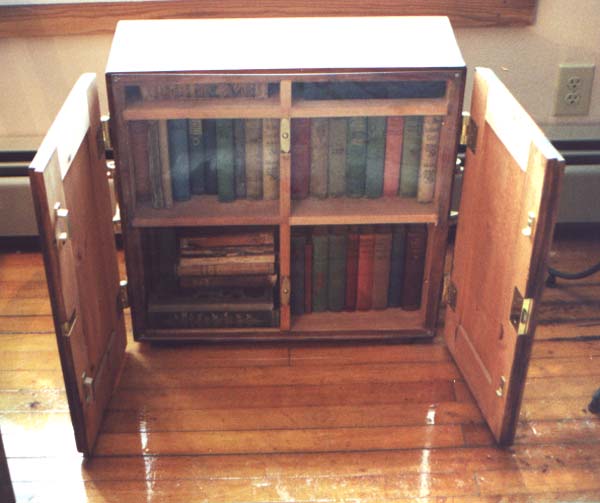I had a fabulous weekend at the Newburyport Literary Festival. In addition to all the great events, I had my friend since third grade, Nancy (pen name Nancy Butler), visiting from New York State. We began with the only unfortunate occurrence--missing the opening ceremonies with a conversation between
Wally Lamb and Andre Dubus III which received rave reviews from all who did have seats. I did comfort myself with the thought that even if we had arrived at what I would have considered early, we would have been too late. We had a great time at the Author's Dinner and I was surprised and pleased to find that my basket which contained
Handmade Books for A Healthy Planet along with materials and tools sold for $150!
Saturday was the big day. We both presented and attended workshops.
What we presented:
Handmade Books For A Healthy Planet: Wish ScrollI gave a workshop based on a project from the new book: a wish scroll from Ethiopia. After a guided lesson in making scroll cases from film and other plastic containers and yarn and scrolls from grocery bags, the group, which included parents and children and adults on their own, decorated the cases and wrote their wishes on the scrolls. It was wonderful to be in a room with the gentle hum of creative activity.
Hooked on Classics: A Hip Approach to Old MaterialA conversation with
Nancy Butler, author of Marvel Comics
Pride and Prejudice and the forthcoming
Sense and Sensibility and Jenny Sawyer, the delightful presenter of
60 Second Recap, an internet video site which introduces the classics to teens in entertaining 60 second videos, moderated by me. We had a great conversation. Nancy and Jenny had both looked at each other's work online so it was an informed conversation as they discussed their motivations and processes.
What We Attended:
Kakapo Rescue: Heartbreak and Hope at the Edge of Survival with Sy MontgomeryIn her illustrated talk about her trip to New Zealand to document the nesting of the almost extinct Kakapo parrots, Sy spoke with excitement and deep emotion about her experience. The fragility of the lives of the individual birds and the incredible care taken by a small group of humans to ensure the survival of the species is deeply moving. I think I was not the only one who had tears in my eyes at the end. Her book for children is illustrated with photographs by Nic Bishop.
Gina Barreca reads from Its Not That I’m Bitter: How I Learned to Stop Worrying about Visible Panty Lines and Conquered the WorldGina is a feminist theorist and humorist. This time the tears forming were from laughter. She is a sharp observer of life who is not afraid of the f word (feminist) and I look forward to reading her books.
Playing With Matches, a talk by Gregory MaguireI had a brief chance to talk to Gregory Maguire and reminisce about the class in Victorian Children's Literature we were both in at Simmons College in the 1970s before his presentation. I had to leave early to give my workshop but was inspired and delighted by what I had time to hear, especially about the friends one gathers across time and space through reading.
Polyphony: Poets Read New EnglandI loved the group reading of an accessible selection of poems by 19th and 20th century New England poets by members of the
Pow Wow River Poets. Each poem was read by multiple poets. I was moved by both the content of the poems and the musicality of the presentation.
Closing Ceremony Honoring The Writer’s Life The festival closed with a reading from John P. Marquand's (a Newburyport resident during his life)
The Late George Apley by Anita Shreve, a poetry reading by JD Scrimgeour accompanied on piano by Philip Swanson, and a reading of John Updike's short story,
The Family Meadow, in the deep, rich voice of local resident Josiah Welch.
See a small selection of photos
here.



























.jpg)












